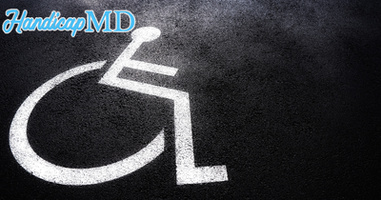
Myths vs. Facts: Debunking Common Misconceptions about Handicap Placards in Montana
Introduction
Handicap placards play a crucial role in ensuring equal access to public spaces for individuals with disabilities. This article aims to debunk prevalent myths surrounding handicap placards in Montana, shedding light on the facts and intricacies associated with their issuance and usage.
Myths vs. Facts: Debunking Common Misconceptions about Placards in Montana
In this section, we'll delve into the importance of clarifying misconceptions surrounding disability permits. By addressing these myths head-on, we aim to provide readers with a comprehensive understanding of the reality behind handicap permits in Montana.
Disability Placard Eligibility
Myth: Placards are only for Wheelchair Users
Contrary to common belief, disability permits aren't exclusive to wheelchair users. The eligibility criteria extend to various disabilities, ensuring that individuals with diverse mobility challenges can benefit from the accommodations provided.
Fact: Varied Disabilities Qualify for Placards
The eligibility criteria encompass a wide range of disabilities, including but not limited to mobility impairments. It's essential to recognize that not all disabilities are visible, emphasizing the inclusive nature of pass eligibility.
Myth: Placards are Easily Abused
Addressing concerns about the potential misuse of Montana handicap placards is crucial. Contrary to the myth, obtaining a permit involves a stringent application process, ensuring that these are issued only to those with legitimate needs.
Fact: Stringent Application Process
The application process involves thorough verification of the applicant's medical condition, requiring documentation from healthcare professionals. This stringent approach is in place to prevent abuse and maintain the integrity of the handicap placard system.
Myths Surrounding Temporary Permits
Temporary passes serve specific purposes, and understanding their role is vital in dispelling myths related to their issuance and use.
Fact: Temporary Passes Serve a Specific Purpose
These are issued for a limited duration based on the individual's medical condition. Clarifying the purpose of temporary placards helps in dispelling misconceptions about their usage and reinforces the importance of their targeted use.

The Legal Consequences of Misusing Permits
Enforcement measures are in place to deter the misuse of disability permits, ensuring that those who genuinely require these accommodations can access them without hindrance.
Common Challenges Faced by Authorized Pass Holders
Addressing the challenges faced by authorized holders is essential in fostering a more inclusive and accessible community.
Myth: All Disabilities Are Visible
Dispelling the myth that all disabilities are visible is crucial for promoting understanding and empathy towards individuals with invisible disabilities.
Fact: Not All Disabilities Are Apparent
Highlighting the fact that not all disabilities are apparent encourages a more inclusive mindset, promoting empathy and consideration for those with hidden or less visible challenges.
Renewing and Updating Disability Passes
Understanding the process of renewing and updating is essential for ensuring continued accessibility for those who require these accommodations.
Myth: Permits are a Permanent Solution
Contrary to the myth, permits aren't a permanent solution. Regular assessments are conducted to determine the continued need for one.
Fact: Regular Assessment for Continued Need
Periodic evaluations ensure that passes are allocated to individuals who genuinely require them, preventing misuse and facilitating fair distribution.
Impact of Placards on Community Inclusion
Highlighting the positive impact of permits on community inclusion emphasizes the importance of these accommodations in fostering accessibility and understanding.
Myth: Placards are a Hassle for Authorities
Dispelling the myth that passes pose a hassle for authorities showcases the collaborative efforts between individuals, healthcare professionals, and authorities in ensuring accessibility and mobility for all.
Fact: Facilitating Accessibility and Mobility
Proper usage of permits streamlines accessible handicap parking for individuals with disabilities, contributing to a more accessible environment. Authorities play a crucial role in upholding the integrity of the system.
Community Education Initiatives
Community outreach programs play a vital role in dispelling myths surrounding disability passes and fostering a more inclusive understanding within society.
Myth: Placards Are Easily Obtainable
Addressing misconceptions about the application difficulty is essential in encouraging eligible individuals to pursue disability permits without undue hesitation.
Fact: Navigating the Application Process
Guidance for applicants in navigating the application process can help dispel concerns about difficulty, ensuring that those who genuinely need passes can access them without unnecessary barriers.
Frequently Asked Questions (FAQs)
Can I apply for a permit online?
Yes, many states, including Montana, offer online applications for disability permits. Ensure you have the necessary documentation before starting the online application process.
What is the duration of a temporary pass?
Temporary passes are issued for varying durations based on the individual's medical condition, typically ranging from a few weeks to a few months.
Can I use my disability permit in other states?
Most states, including Montana, have reciprocity agreements, allowing the use of out-of-state permits. However, it's crucial to familiarize yourself with the specific regulations of each state.
How can I report the misuse of disability passes?
Report misuse to the local Department of Motor Vehicles (DMV) or the relevant authority in your state. Provide details and, if possible, photographic evidence to assist in their investigation.
Do permits expire, and how do I renew them?
Yes, handicap placards have expiration dates. Renewal processes vary by state, but typically require updated medical documentation to ensure continued eligibility.
Is there financial assistance for obtaining a pass?
While specific financial assistance programs may vary, individuals facing financial constraints can explore options through local disability services or non-profit organizations.
Conclusion
In debunking myths and highlighting the facts surrounding handicap placards in Montana, we aim to promote a more informed and empathetic perspective. By understanding the nuances of these accommodations, we contribute to building a community that values accessibility and inclusivity.
.png)





